Plant of the Month: February 2016
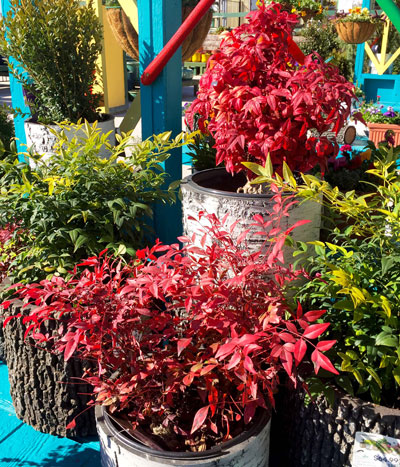
A collection of nandinas at Covington’s Nursery in Rowlett, as photographed five days ago.
All that most of us seek in choosing our landscaping plants is something that looks great all year and that does so with a minimum of care and anxiety. Oh, if it blooms or has fruit, that’s great, too. If it stands out from the other plants in our gardens, that’s even better.
That’s where nandinas come in. Originally we had only the standard Nandina domestica, sometimes called “heavenly bamboo” because of its stem structure and spreading habit. And this standard nandina is still a great plant that is much under-used. It grows to be 6 or 7 feet tall.

Lovely planting of old-fashioned heavenly bamboo nandinas shows off its wintertime berries.
Then someone found a shorter form that would only grow to 48 inches in height. It was named “compact nandina,” because at that time, it was a more diminutive form. Both it and standard nandina do produce showy orange-red fruit in long, grape-like clusters.
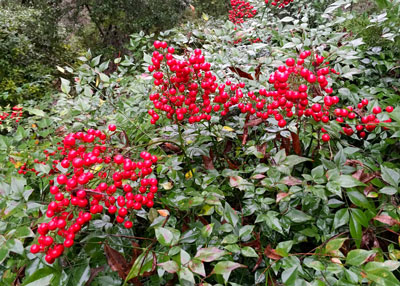
Nandinas’ fruit turns orange-red in mid-fall, and the clusters persist into the spring, even in the face of winter’s snow, ice and rains.
Two dwarf types came along in the 60s and early 70s. Harbour Dwarf could be used as a tall groundcover or low, bordering shrub to 18 to 22 inches tall. It looks like standard nandina, but it just doesn’t grow nearly as tall. And Nana nandina caught everyone’s eye. It grows to be basketball-sized, and its leaves turn brilliant red in the winter. Its leaflets are more rounded and crinkled. It looks different from most other nandinas, and it has never seemed to last more than a few years in our gardens.
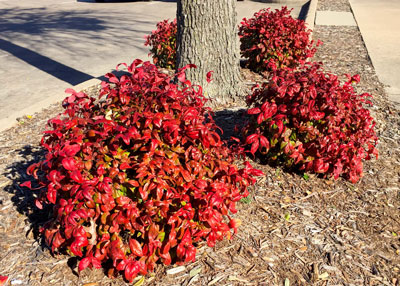
Firepower nandinas have green foliage all summer, but brilliant red in the winter. Mature height: 1 to 2 ft.
Gulf Stream and Moonbay nandinas were introduced in the late 1980s. Both were touted for their compact habits, growing to 36 to 42 inches tall. They’re still popular, but I have to admit that I saw more iron deficiency on them than I have on my other comparable choices. Compact nandina has out-performed them in my own landscape.
More recently there have been several other nandinas brought into the market. Flirt grows to 18 to 20 inches tall. It resembles Harbour Dwarf, but with superior red color much more of the year. Blush Pink is an improvement over the similar Firepower, and both resemble the old Nana nandinas in look and size.
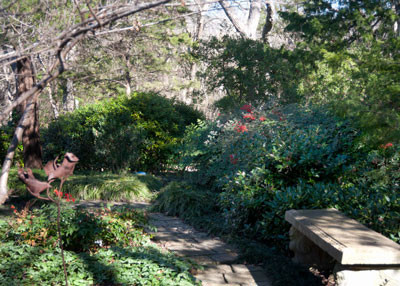
Compact nandinas in the Sperry home landscape – these are growing in a great deal of shade in the summer, yet they still manage to produce fruit every winter.
There are several other types that are less commonly seen, including Umpqua Warrior, Umpqua Princess and Umpqua Chief , and all are excellent choices for dependable service. I have Umpqua Warrior in our landscape, and I love its finer texture, darker red foliage and strong growth to 6 to 8 feet tall.
Pruning Nandinas
Nandinas grow in sun, part sun and even shade. The main thing you give up if they’re in the shade 12 months a year (such as on the north side of your house or beneath an evergreen such as a live oak) is winter color. But you’ll still get their good looks and fine textures. And all with plants that almost never have problems.
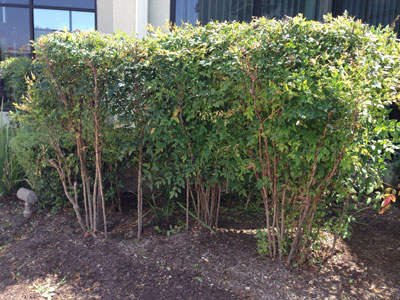
Improperly pruned nandinas trimmed only at their tops by commercial landscapers.
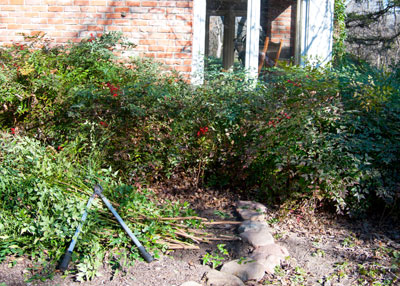
Established nandinas pruned properly to remove tallest canes completely to ground.
Trim nandinas in late winter by removing the tallest canes completely to the ground. That will force them to send out new shoots from down below. You really don’t want nandinas to branch up in the air. Aim to remove the tallest one-third to one-half of the canes each year, and you’ll be able to keep your plants full and compact.

